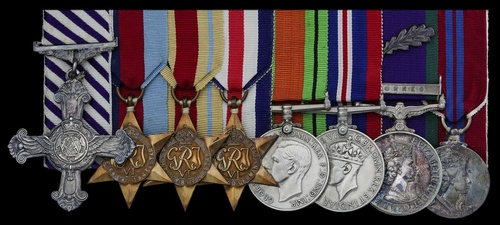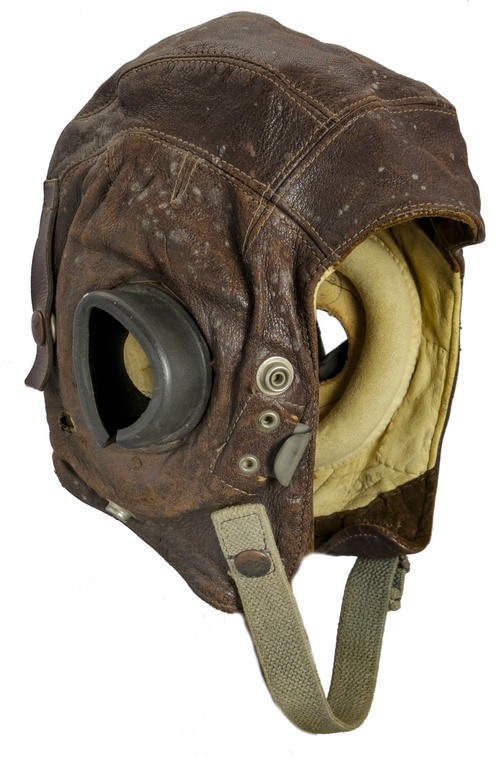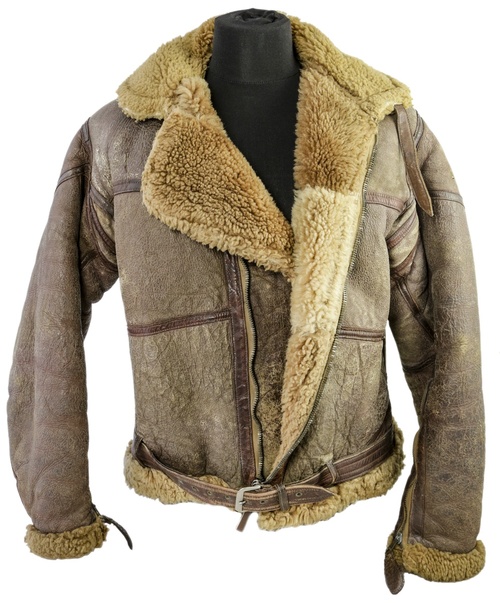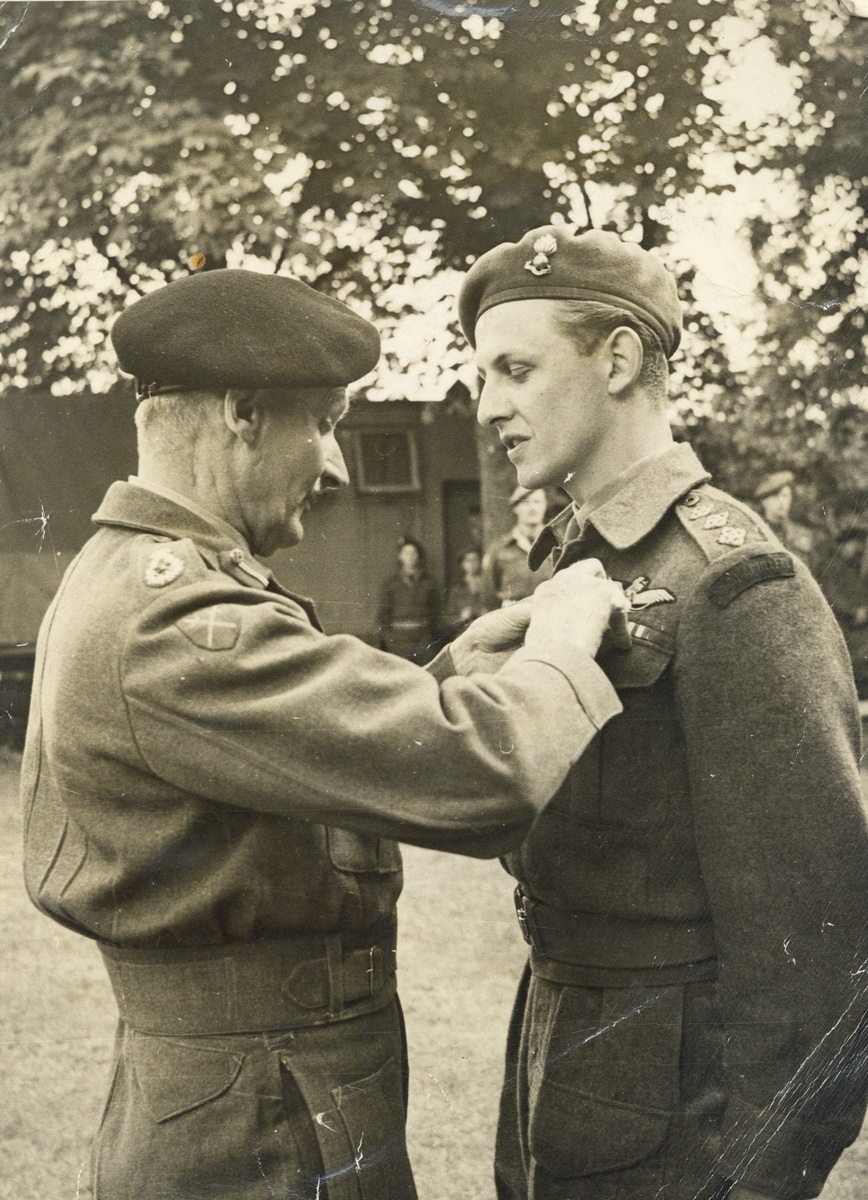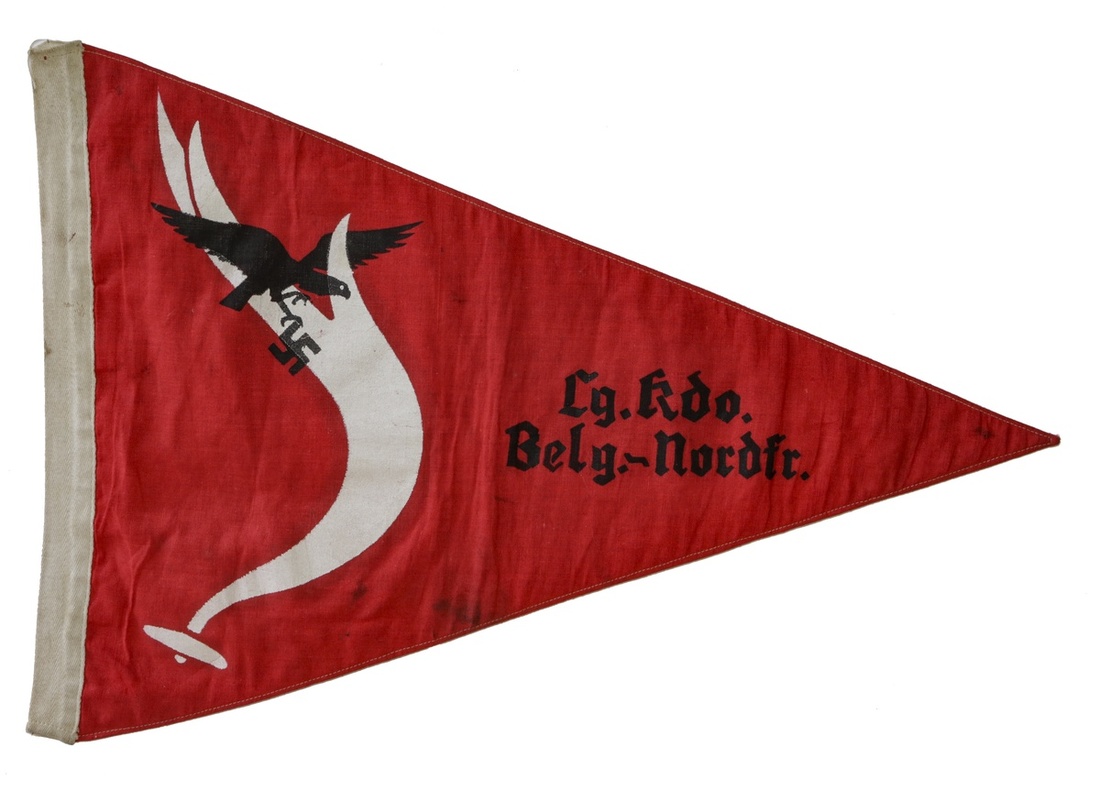Auction: 19002 - Orders, Decorations and Medals
Lot: 390
Sold by Order of a Direct Descendant
'All these tasks so ably carried out involved great physical strain and considerable personal danger to Captain Lindsell, who repeatedly flew over known enemy positions to observe fire from our own artillery. The Commander of 2 Canadian AGRA, under whose orders he was operating, has paid tribute to his keenness, skill, and dogged perseverance on this occasion whereby the activities of enemy artillery was subdued to such an extent that our men were able to advance without hindrance from hostile shelling.
This officer who, in the period July 1944 to March 1945, has flown a total of 234 operational sorties totalling 267 hours in support of artillery formations has displayed consistently an enthusiasm for his work and an indifference to personal danger, which, coupled with his acknowledged technical ability and outstanding devotion to duty on the occasion already mentioned, well deserves consideration for the award of the D.F.C.'
A personal endorsement by Field Marshal B. L. Montgomery, as appended to the recommendation for the D.F.C. to David Lindsell, R.A.
An extremely rare Second World War Rhine operations D.F.C. group of eight awarded to Lieutenant-Colonel D. R. 'Wings' Lindsell, Commanding Officer 40th Light Regiment, R.A., late 661 Air O.P. Squadron, Royal Regiment of Artillery
Piloting an Auster - affectionately known by him as a 'flying dustbin' - Lindsell was credited with gaining 'fine results' by Field Marshal Montgomery, operating as he did at very low-level in 'spotting' - and engaging - hostile gun batteries and enemy troops
Distinguished Flying Cross, G.VI.R., reverse officially dated '1945', with its Royal Mint case of issue; 1939-45 Star; Africa Star; France and Germany Star; Defence and War Medals 1939-45; General Service 1962-2007, 1 clasp, Borneo, with M.I.D. oakleaf (Lt.-Col. D. R. Lindsell. D.F.C. R.A.); Coronation 1953, mounted court-style as worn, very fine and better (8)
D.F.C. London Gazette 26 July 1945:
'In recognition of gallant and distinguished services in North-West Europe.'
The original recommendation states:
'During the period 10 February to 10 March 1945, when the Canadian Army was engaged in breaching the defences of the Siegfried Line and advancing to the west bank of the Rhine, Captain Lindsell was continuously employed on flying duties concerned with the observation of hostile batteries, and the destruction of enemy troops retreating over the Rhine. He reported and observed 60 hostile batteries, engaging 38 of these by observed fire, the others being dealt with by predicted shoots.
This officer also engaged and sank one steamship and one motor driven landing-barge used as a ferry by the retreating enemy. These ships were capable of carrying 200 men and were in use when destroyed. In addition, 18 neutralisation and destructive shoots were effectively carried out under his fire, orders on to ferry crossings over the Rhine, and in harbours in the area of Wesel which were being used as concentration areas for shipment.'
The recommendation is further endorsed by Field Marshal B. L. Montgomery:
'All these tasks so ably carried out involved great physical strain and considerable personal danger to Captain Lindsell, who repeatedly flew over known enemy positions to observe fire from our own artillery. The Commander of 2 Canadian AGRA, under whose orders he was operating, has paid tribute to his keenness, skill, and dogged perseverance on this occasion whereby the activities of enemy artillery was subdued to such an extent that our men were able to advance without hindrance from hostile shelling.
This officer who, in the period July 1944 to March 1945, has flown a total of 234 operational sorties totalling 267 hours in support of artillery formations has displayed consistently an enthusiasm for his work and an indifference to personal danger, which, coupled with his acknowledged technical ability and outstanding devotion to duty on the occasion already mentioned, well deserves consideration for the award of the D.F.C.'
David Rigby 'Wings' Lindsell was born on 3 December 1921, the second son of Harold Offley Lindsell and Olive Screen of 28 Craneswater Avenue, Southsea.
His father entered the Colonial Civil Service in 1909 and served in overseas appointments for 28 years, including long periods at Kano, Nigeria, where he acted as Senior Resident and was instrumental in developing the Kano electricity and water schemes. The family home in Nigeria also played host to Mary, Duchess of Bedford, affectionately known as 'The Flying Duchess', and a string of visiting luminaries, among them 1st Viscount 'Boom' Trenchard, who later became a family friend and knew David and his brother Alan.
A Nigerian upbringing aside, young David was educated at Beach Court School, Walmer, Kent, followed by St. Edmund's School, Canterbury, where he was a boarder and Captain of the Football 1st XI.
Gunner
Upon leaving school, he attested for the Regular Army and was commissioned in the Royal Artillery, witnessing service in Persia and India, before returning home to England in the summer of 1939, as his father's health had deteriorated.
As the 'Phoney War' progressed in 1939, Lindsell posted as 2nd Lieutenant to Bangalore, India:
'Well, as in England, we waited for the Germans to come and they never came, so out here we wait for the Japs' (A letter to his mother, 15 July 1942, refers).
Admitted to the British Military Hospital at Bangalore, suffering from a 'slight' fever, the lack of urgency, monotonous routine and indifference to 'tent life' began to frustrate Lindsell, not to mention those looking after him:
'This hospital is extremely dull and unfriendly. No young nurses like one gets at home - everything is done by rather disgruntled male orderlies.'
Posted to the 92nd Field Regiment, R.A., Lindsell's rather quiet life took a more adventurous turn on an evening journey to an Entertainments National Service Association concert. He was placed in command of the leading lorry driven by a rather 'green' Scotsman:
'I don't think I have ever had a more terrifying trip. The road, or rather track, was pitted with holes and we had to pass over several narrow bridges with steep drops on each side. Considering that my driver cheerfully informed me that he was a cook and had not driven since the Spanish Civil War, considering also that the lights completely failed, you may imagine my feelings' (15 August 1942, refers).
The loss of his brother Alan in October 1942 proved devastating to Lindsell, and he wrote a very heartfelt letter home to his mother on 30 October 1942 imploring her to look after herself and try to recover; this coincided with the death of his father, which compounded the family tragedy.
Flying gunner
About this time Lindsell, now promoted Lieutenant, decided to apply for a role as pilot on an Air O.P. Squadron - A Royal Air Force Unit consisting of a Squadron H.Q. and a number of Flights tasked for working with Royal Artillery units. According to Unarmed into Battle, by H J. Parham, getting accepted for training in an Air O.P. Squadron was a feat in itself:
'They were carefully selected from the great number of Captains in the Royal Regiment of Artillery, a Regiment which at one time numbered about half the Army. They were mature young men who, first and foremost, had to be first-class shots with field, medium and heavy guns. They had to have a balanced and reliable tactical outlook, a sense of proportion and very great skill as pilots, able to use landing strips tiny by comparison to anything known to the present-day race of pilots. Upon their judgment depended whether the fire was justified or wasted, for usually they alone were in a position to assess the worth of the target and the best way of engaging it.'
As such, the Squadrons themselves had a dual personality. Although officially R.A.F. units, they were officered almost entirely by the Royal Artillery, all the pilots and many of the men being Gunners. They operated far-forward, in the area of the leading Divisions, and often their landing grounds were within enemy gun range.
Posted to No. 1 E.F.T.S., Lindsell took his first flight aboard a Tiger Moth piloted by Flight Lieutenant Mills on 17 June 1943. In October, he transferred to No. 43 O.T.U., being awarded his Army Flying Badge in January 1944 and subsequently posted to No. 661 Squadron on 27 January 1944. For the next seven months Lindsell gained experience of low-level flying, map reading and landing on shortened airstrips, the majority of the time flying Tiger Moths and Austers.
Operational - close shaves
After a final brief spell with No. 43 O.T.U., he returned to No. 661 Squadron and made his first operational flight - A recce to Boulogne - on 13 September 1944.
Thereafter, Lindsell was involved in daily sorties over enemy territory, typically observational flights to Boulogne and Wimereux, and a recce over the Fort de la Creche on 18 September. It was whilst on the latter mission that his Auster IV was hit by light anti-aircraft fire. The damage was clearly limited as he conducted two further flights in the same aircraft that day - including a second pass over the ageing coastal battery.
Lindsell continued to fly regular missions over Northern France and Belgium throughout September and October, his log book noting 'destructive shoots' to Calais and regular C.B. sorties in the Leopold Canal area. On 13 October he conducted a mortar recce, and a little under a fortnight later was fortunate to land relatively unscathed when his Auster was hit in the port wing by an 88mm. shell in the vicinity of Cadzand and Groede. November witnessed further almost daily 'C.B. sorties' and 'destructive shoots' above Nijmegen and Antwerp, followed by a 'shoot on retreating infantry' on 4 December and numerous sorties to Arnhem and the Reichswald forest. The New Year witnessed sorties over the Haas River and a 'destructive shoot on enemy H.Q.' on 7 January 1945. Transferred to 'C' Flight, Lindsell had a second close shave on 10 January when his Auster was hit in the tail by opportunist small arms fire, his log book noting 'Flying too low in snowstorm'.
The Rhine operations
In March 1945, Lindsell and his Squadron - now attached to H.Q. 22nd Armoured Division - began preparations for the crossing of the Rhine by flying almost daily missions to observe the fall of artillery shells and assist with maintaining pressure on enemy troops who were digging in on the east bank. It was on one such sortie that Captain Sharp of No. 661 Air O.P. took off on an impromptu flight, only to discover that a Canadian smokescreen made observation impossible except from an extreme flank. Observing from a quiet section of the river opposite the town of Rees, he was amazed during a turn to catch sight of a party of approximately 100 enemy digging weapons pits 'so blatantly that for some time the pilot could not believe his eyes' (Unarmed in Battle, refers). Sharp called for fire - but the reply came back that the target was outside the zone of any of the allotted guns:
'[So] Sharp decided to enlist the aid of Captain Lindsell, and together they removed the Perspex panel opposite the rear seat of an Auster. After lightening the aircraft by removing all encumbrances, such as the wireless set, the intrepid pair took off. This time Lindsell was at the controls, whilst Sharp was sitting in the back nursing a Bren gun and magazines. On the flight out Lindsell was sceptical; but when they reached the river he exclaimed, 'There's hundreds of 'em!' By flying at about 700 feet and on a course roughly parallel with the river, they found that they could give the enemy one magazine per run, the very limited traverse of the Bren gun preventing any improvement on this. The effect seemed to be fairly satisfactory, and the pair continued to perform their circuits and firing runs, all with apparently good results. The fact that the target did not go to ground was attributed to the complete ignorance of the Boche as to where the fire was coming from. However, the Auster made one run too many and was severely hit by small arms fire.'
Now having been on the receiving end of three 'close shaves', Lindsell took the decision to make a fast getaway:
'By using plenty of throttle Lindsell managed to fly the aircraft more or less straight and level; skidding turns were possible at full throttle but only in one direction. His troubles were not over on reaching the landing ground, as he found himself denied the use of the rudder at slow speeds. However, he eventually succeeded in lining up the aircraft with the strip, and by bringing it in more like a Spitfire than an Auster, he touched down, and with heavy application of brakes, brought it to a standstill.'
This spectacular flight is detailed in his log book for 8 March 1945, the entry noting Captain Sharp as passenger, together with 'L.A.A. Attack on Enemy Inf.' and 'Hit by A.A. fire. Rudder cables severed'. The cables were replaced that same day, Lindsell making a second 30-minute sortie.
For his gallantry piloting Austers in repeated low-level attacks, Lindsell was awarded the Distinguished Flying Cross. Reputedly the first D.F.C. awarded to the Squadron, the riband of the decorations was pinned personally to his chest by Field Marshal Montgomery, a matter of hours after the Field Marshal received a cracked vertebrae following a crash at an airfield near Oldenburg - and much to the consternation of his doctors.
Lindsell went on to fly large numbers of sorties over the next few days, including four on 10 March which included 'shoots' on a ferry crossing, the harbour at Wesel, a landing strip, ships crossing the Rhine and the village of Bislich. The following weeks saw daily flights over Emmerich, Wesel and Cleve, his log noting on 21 March 'Inf. Sortie, approx. 40 enemy troops', followed by a second flight that day, '1 des. shoot on enemy held building.'
April and May witnessed daily observational flights and transfers between German cities, by which time resistance was clearly lessening. More worrying for the low-flying Air O.P. pilots was 'the very real danger of being brought down by one of our own shells' - only a few weeks previously, three A.O.P. pilots and their R.A.F. rear observers were killed above the dropping zones around Hamminkeln, whilst another pilot had a fortunate escape when a 5.5-inch shell passed through his rudder without exploding.
Post-war career - Borneo 'mention'
Following the cessation of hostilities, Lindsell successfully applied for a permanent commission in the Royal Artillery and was appointed Lieutenant on 27 July 1945. Made Captain soon thereafter, he served with the British Army of Occupation on the Rhine, being posted to Hamburg and later Kiel. Returning home on leave, he married Sheila Wilson on 4 June 1946, daughter of the Reverend John Kenneth Wilson - who served as Archdeacon to the R.N., 1943-47, and Hon. Chaplain to The King from 1944 - and assisted his new father-in-law during an Evensong in the Y.M.C.A. Concert Hall at Kiel, not long thereafter.
Returning home, Lindsell was posted to the 1st Regiment, R.H.A., being graded 'outstanding' in a confidential report and recommended for accelerated promotion. Following two years on the Staff, in which he served as D.A.M.S. of M.S.5, he was recommended for the role of Commanding Officer.
Lindsell subsequently served in Borneo and was mentioned in despatches 'in recognition of gallant and distinguished services in the Borneo territories' whilst serving as Lieutenant-Colonel, Commanding, 40th Light Regiment, Royal Artillery (London Gazette 13 December 1966, refers). In a report compiled by Lindsell on the 40th Light Regiment, he noted that they were 'engaged in some one hundred and twenty-five operations'. He went on to note:
'I am clearly biased, but I believe that they all, every Officer, Warrant Officer, Non-Commissioned Officer and Gunner did a magnificent job under exceptionally difficult circumstances.'
Lindsell appears to have left the Army soon after returning home, retiring to the south of England with his growing family.
To be sold with a comprehensive archive of original documentation, and related uniform and flying kit, including:
(i)
Original R.A.F. Log Books (2), representing his comprehensive run of air service from 17 June 1943-15 May 1950, the last flight being a Cross Country with 657 Air O.P. Squadron, R.A.F.
(ii)
Original 1945 Officer's Commission document and 1953 Coronation Medal Certificate to 'Captain D. R. Lindsell, D.F.C., R.A.'
(iii)
Original M.I.D. certificate in envelope of transmittal, together with notification letter from the M.O.D., Stanmore, dated 13 December 1966.
(iv)
Three photograph albums, the first containing an excellent archive of his early career, commencing with 'A' Flight at Biggin Hill, 1944, Maldegen, Belgium, 1944, Nijmegen, 1944, and Germany from 1945-51, the majority around Kiel. It also includes numerous family photographs, including a large number with his wife and father-in-law, together with formal military group photographs; approx. 150 photographs in first album, the second and third detailing holidays in the 1950s and 1960s.
(v)
A large 'scrap book' containing family newspaper clippings, an archive of original and copied letters (5) written by Lindsell to his mother during the war years, further letters home written by his children from boarding school, and a number of large colour military photographs involving parades and formal inspections. It also contains a signed letter to Mrs. Lindsell from Lord Mountbatten of Burma, thanking her for her sympathy on the loss of his wife, together with another letter to Mark Lindsell, inscribed 'To Mark, Best Wishes, Graham Hill'.
(vi)
Buckingham Palace D.F.C. forwarding letter; an original press photograph of Lindsell having the D.F.C. riband pinned to his chest by Field Marshal Montgomery; copied recommendations from AIR 2/9105, detailing the award of D.F.C.
(vii)
A hardback copy of the book Unarmed into Battle, by H. J. Parham & E. M. G. Belfield, published 1956, inscribed in pencil 'Lindsell 1958' to inside cover.
(viii)
The recipient's Irvin flying jacket, Size 4, Stores Reference 22c/32, Breast 36/38", Waist 32/34", sherpa-lined leather, all original features present, with label at the neck named to 'Lt. Lindsell' in black ink; his Irvin flying helmet, Size 2, with original webbing neck strap, in good condition.
(ix)
The recipient's Royal Artillery Colonel's No. 2 Dress uniform, by Hawkes & Co. Ltd., 1 Savile Row, London, comprising khaki tunic, the buttons bearing the Royal Artillery cypher with King Edward's Crown (1953-present), the shoulder straps with Colonel's rank insignia, scarlet flashes on the lapels denoting field rank, a Hawkes label sewn into the inside pocket and named to 'Major D R Lindsell' in blue ink, the recipient's medal riband bars sewn onto the left breast, his pilot's Wings above; corresponding khaki trousers, with Hawkes inside label named to 'Major D R Lindsell' in blue ink, in good condition.
(x)
A Royal Artillery Field Officer's full dress cap by Herbert Johnson, 38 New Bond Street, London, in navy blue with scarlet turban, the peak with gilt wire oakleaf decoration.
(xi)
A Royal Artillery Field Officer's No. 2 dress cap, in khaki with scarlet turban; A Royal Artillery Field Officer's slouch hat by Herbert Johnson, 38 New Bond Street, London.
(xii)
An Air O. P. Squadron Corps plaque presented to 'Captain D. R. Lindsell, D.F.C., R.A.'
Subject to 20% VAT on Buyer’s Premium. For more information please view Terms and Conditions for Buyers.
Sold for
£5,500
Starting price
£2800

